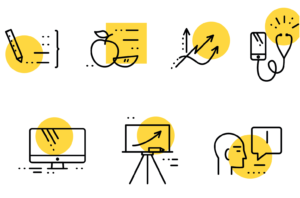Blended learning: Deficits and prospects in higher education
 This article examines the nature and evolution of the term blended learning (BL), which encompasses numerous connotations, including its conception as a strategy, delivery mode, opportunity, educational shift, or pedagogical approach. Although much has been said in this field, very few studies examine the different types of blends behind their implementation. To address this gap in the literature, the article indicates types of blends and analyses the characteristics of BL, its benefits and limitations, supported by a review of literature, and an analysis of a sample of BL cases in higher education language-teaching worldwide. Additional data were also gathered through a questionnaire administered to language department chairs. Data were triangulated and analysed using the grounded theory approach. The article closes with an examination of different levels of blending, the various perspectives within the educational community on its use, and a discussion of its future applicability, especially in higher education.
This article examines the nature and evolution of the term blended learning (BL), which encompasses numerous connotations, including its conception as a strategy, delivery mode, opportunity, educational shift, or pedagogical approach. Although much has been said in this field, very few studies examine the different types of blends behind their implementation. To address this gap in the literature, the article indicates types of blends and analyses the characteristics of BL, its benefits and limitations, supported by a review of literature, and an analysis of a sample of BL cases in higher education language-teaching worldwide. Additional data were also gathered through a questionnaire administered to language department chairs. Data were triangulated and analysed using the grounded theory approach. The article closes with an examination of different levels of blending, the various perspectives within the educational community on its use, and a discussion of its future applicability, especially in higher education.







